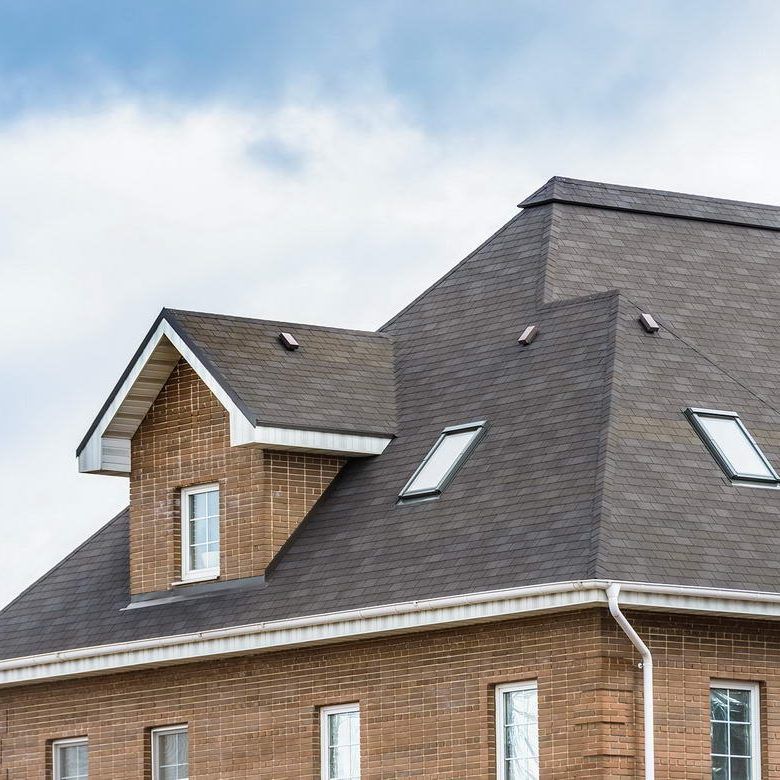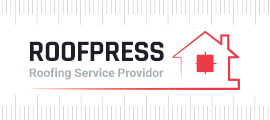Metal Roofing

Metal Roofing: Durable and Energy-Efficient Solution for Modern Homes
Metal roofing has become increasingly popular for both residential and commercial buildings in recent years. This durable and long-lasting roofing option offers numerous benefits over traditional materials. Metal roofs can last 40 to 80 years with proper maintenance, significantly outlasting conventional asphalt shingles.
Metal roofing contractors in Los Angeles offer a wide range of styles and materials to suit any architectural design. From sleek standing seam panels to textured shingles that mimic the look of slate or wood, metal roofing provides versatility in both form and function. These roofs are not only aesthetically pleasing but also highly energy-efficient, reflecting solar radiation to help reduce cooling costs in warmer climates.
Choosing the right metal roofing system involves considering factors such as climate, budget, and local building codes. A reputable metal roofing company can guide you through the selection process and ensure proper installation for optimal performance. With its durability, energy efficiency, and low maintenance requirements, metal roofing represents a smart investment for property owners looking to enhance their building's longevity and value.
Key Takeaways
- Metal roofs offer exceptional longevity and durability compared to traditional roofing materials
- Various styles and materials are available to complement different architectural designs
- Professional installation is crucial for maximizing the benefits of a metal roofing system
Types of Metal Roofing Materials
Metal roofing offers durability, longevity, and energy efficiency. Various metal materials provide unique benefits and aesthetic options for homeowners and builders.
Galvanized Steel and Galvalume
Galvanized steel is a popular and cost-effective choice for metal roofing. It consists of steel coated with zinc for corrosion resistance. Galvanized steel roofs typically last 40-60 years and come in various styles and colors.
Galvalume is similar but uses an aluminum-zinc alloy coating. This provides enhanced corrosion resistance and reflectivity compared to galvanized steel. Galvalume roofs often have a longer lifespan, potentially reaching 60+ years.
Both options offer excellent durability and fire resistance. They're available in different panel styles, including standing seam and corrugated profiles. Galvanized and Galvalume roofs are relatively affordable compared to other metal roofing materials.
Stainless Steel Roofing
Stainless steel roofing boasts exceptional corrosion resistance and strength. It contains chromium, which forms a protective layer against rust and other forms of deterioration.
Key benefits of stainless steel roofing include:
- Extreme durability (100+ year lifespan)
- Low maintenance requirements
- High resistance to harsh weather conditions
- Aesthetic appeal with a sleek, modern look
Stainless steel roofs are often more expensive than galvanized or Galvalume options. However, their longevity and minimal maintenance needs can offset the initial cost over time.
Aluminum Roofing
Aluminum roofing is lightweight and naturally resistant to corrosion. It's an excellent choice for coastal areas due to its salt-spray resistance.
Advantages of aluminum roofing:
- Weighs about 50% less than steel
- Highly resistant to rust and corrosion
- Good energy efficiency due to reflective properties
- Easy to form and shape into various profiles
Aluminum roofs typically last 50+ years. While more expensive than steel options, they offer superior performance in certain environments. Aluminum is also 100% recyclable, making it an environmentally friendly choice.
Zinc Roofing
Zinc roofing is known for its distinctive appearance and self-healing properties. It forms a protective patina over time, which helps resist corrosion and scratches.
Notable features of zinc roofing:
- Extremely long lifespan (100+ years)
- Low environmental impact (100% recyclable)
- Unique, evolving aesthetic as it weathers
- Minimal maintenance requirements
Zinc roofs are more expensive than steel or aluminum options. However, their longevity and low maintenance needs can provide value over time. Zinc's malleability allows for creative architectural designs and complex roof shapes.
Metal Roofing Advantages
Metal roofs offer exceptional performance and value. They stand out for their impressive durability, low maintenance requirements, and ability to provide a solid return on investment for homeowners.
Durability and Longevity
Metal roofs are renowned for their long lifespan, often lasting 50 years or more with proper care. They resist damage from severe weather conditions, including high winds, hail, and heavy snow. Metal roofing materials don't crack, warp, or rot like some traditional options.
These roofs also offer superior fire resistance, potentially lowering insurance premiums. Their durability extends to pest resistance, as metal is impervious to insects and small animals that might damage other roofing materials.
Many metal roofs come with extensive warranties, some lasting up to 50 years, reflecting manufacturers' confidence in the product's longevity.
Maintenance and Performance
Metal roofs require minimal maintenance, saving homeowners time and money over the years. They don't need regular replacement of shingles or tiles. Periodic inspections and occasional cleaning are typically sufficient to keep a metal roof in top condition.
These roofs excel in various climate conditions. They reflect solar heat, potentially reducing cooling costs in summer. In winter, they shed snow easily, preventing accumulation and potential damage.
Metal roofs are also environmentally friendly. They're often made from recycled materials and are fully recyclable at the end of their life cycle. This sustainability factor appeals to eco-conscious homeowners.
Return on Investment
While metal roofs have a higher initial cost, they offer excellent long-term value. The durability and longevity of metal roofing mean fewer replacements over time, resulting in cost savings.
Energy efficiency is another factor contributing to ROI. Metal roofs can reduce energy bills by keeping homes cooler in summer and providing better insulation in winter.
Many homebuyers view metal roofs as a premium feature, potentially increasing a home's resale value. The long-lasting nature of metal roofing can be an attractive selling point for future buyers.
Insurance savings may also contribute to ROI, as some insurers offer discounts for homes with metal roofs due to their durability and fire resistance.
Installation Process
Installing a metal roof requires careful planning and execution. The process involves preparing the roof surface, installing panels or shingles, and adding finishing touches for a weathertight seal.
Preparing for Installation
Begin by removing the old roofing material and inspecting the roof deck for damage. Repair any weak spots and ensure the surface is clean and dry. Install an underlayment to provide an extra layer of protection against moisture. For metal panel roofing, install purlins or battens to create an even surface.
Measure the roof carefully and plan the layout of panels or shingles. This step is crucial for achieving proper alignment and minimizing waste. Mark reference lines to guide installation.
Take safety precautions seriously. Use fall protection equipment and ensure proper ladder placement. Have all necessary tools and materials on hand before starting.
Metal Panel and Shingle Installation
For metal panel roofing, start at the eaves and work upward. Overlap panels according to manufacturer specifications to ensure proper water drainage. Secure panels with screws or clips, being careful not to overtighten.
When installing metal shingles, begin at the bottom edge and work your way up in rows. Overlap shingles as directed and nail or screw them in place. Pay attention to manufacturer guidelines for proper fastener placement.
Cut panels or shingles as needed to fit around vents, chimneys, and other roof features. Use tin snips or a circular saw with a metal-cutting blade for precise cuts.
Finishing Touches and Accessories
Install ridge caps to cover the peak of the roof. These provide a finished look and prevent water infiltration at the ridge. Secure them with screws or nails, ensuring proper overlap.
Add flashing around chimneys, vents, and in valleys to direct water away from vulnerable areas. Install drip edge along the eaves and rakes to guide water into gutters.
Seal any exposed fasteners or seams with a high-quality sealant designed for metal roofing. This step is crucial for preventing leaks and ensuring long-term performance.
Finally, inspect the entire roof for any missed fasteners, gaps, or areas needing additional sealing. Clean up any metal shavings or debris to prevent rust stains on the new roof.
Styles and Aesthetics
Metal roofing offers diverse aesthetic options and panel profiles to suit various architectural styles. Homeowners and designers can choose from a wide range of colors, finishes, and shapes to create unique and visually appealing roof designs.
Color and Appearance Options
Metal roofs come in an extensive palette of colors and finishes. Traditional earth tones like browns and grays are popular choices for a natural look. For a bolder statement, vibrant reds, blues, or greens can make a roof stand out.
Modern metal roofing can mimic the appearance of other materials. Some styles replicate the look of wood shakes, clay tiles, or slate, providing classic aesthetics with metal's durability.
Finishes range from matte to glossy. Textured surfaces can add depth and visual interest. Many metal roofs feature special coatings that resist fading and chalking, maintaining their color for decades.
Panel Profiles
Metal roofing comes in various panel profiles to suit different architectural styles and performance needs. Standing seam is a popular choice for its clean, contemporary lines. These panels feature raised seams that run vertically from eave to ridge.
Ribbed and corrugated panels offer a more traditional, agricultural look. These profiles provide excellent water shedding and are often used on barns, sheds, and industrial buildings.
Metal shingles offer a more conventional appearance, resembling asphalt shingles but with enhanced durability. They come in various shapes, including rectangular, diamond, and scalloped designs.
Tile-style metal panels can replicate the look of Spanish or Mediterranean clay tiles. These profiles add texture and character to the roof while maintaining the benefits of metal.
Choosing a Metal Roofing Contractor
Selecting the right contractor for your metal roofing project is crucial. Look for professionals with at least three years of experience installing metal roofs. This ensures they have the expertise to handle the unique challenges of metal roofing installations.
Ask friends and neighbors for recommendations. Personal referrals can lead you to reliable metal roofing installers with proven track records in your area.
Consider these key factors when evaluating potential contractors:
- Licensing and insurance
- Manufacturer certifications
- Portfolio of completed projects
- References from past clients
- Warranty offerings
Don't base your decision solely on price. The contractor's expertise and the quality of materials used are equally important for a successful residential metal roofing installation.
Request detailed written quotes from multiple contractors. This allows you to compare services and pricing objectively.
Check if the contractor is a member of the Metal Construction Association (MCA). MCA membership indicates a commitment to industry standards and ongoing education.
Before signing a contract, ensure all project details are clearly outlined, including:
- Start and completion dates
- Material specifications
- Payment terms
- Clean-up procedures
By carefully vetting potential contractors, you can find a skilled professional to install your metal roof with confidence.
Contact Us
We will get back to you as soon as possible.
Please try again later.
About Company
Professial Roofing Company with an Professial Approach.
Navigation
| Powered by Shawn
